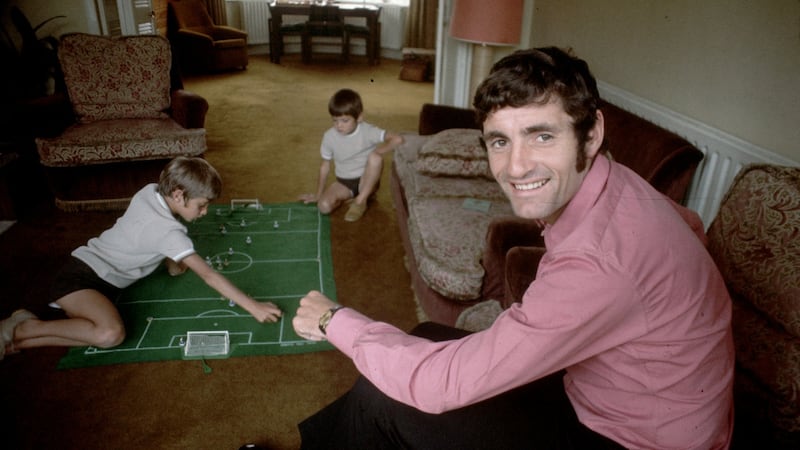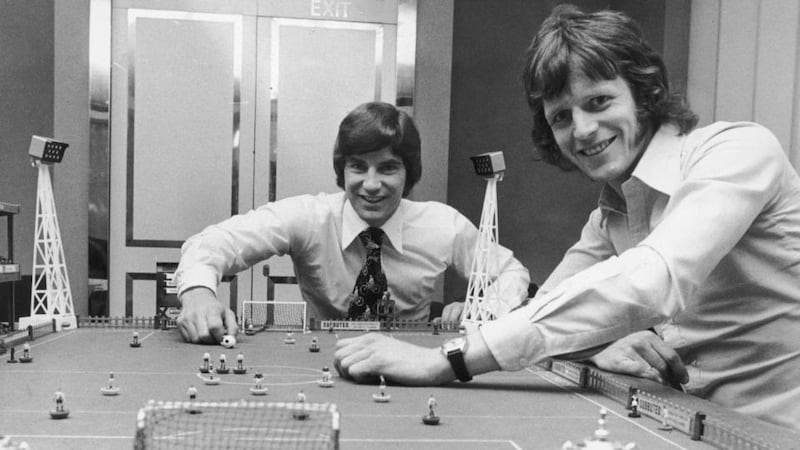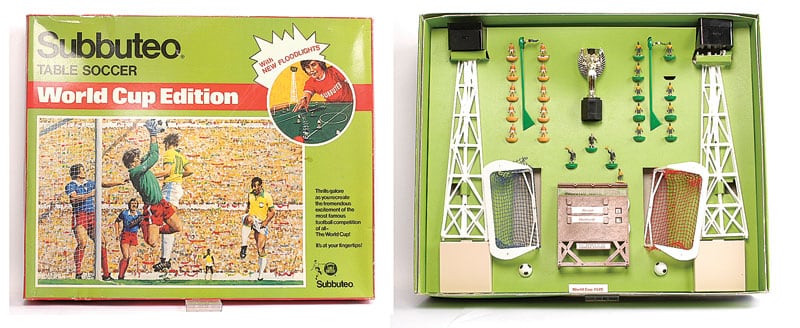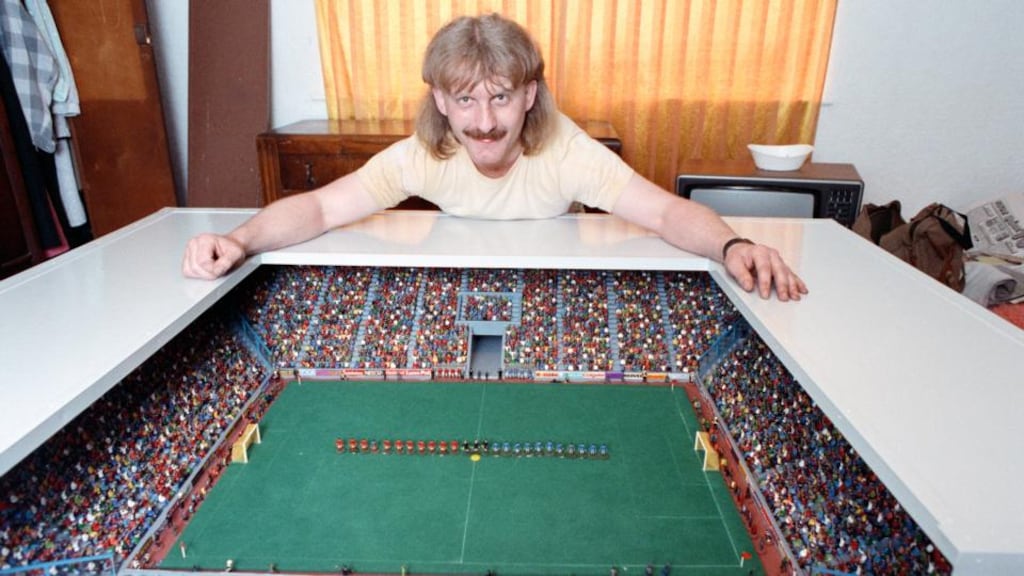In the early summer of 1983 then I finally retired the Triumph 20 to the shed where I watched it happily rust for years after. In its stead, I took possession of a gold, 10-speed Viking racer. I’d grown out of Choppers and Grifters at that point, and, Tom assured me, I needed a serious bike with proper gears to make the three-mile round trip to Coláiste an Spioraid Naoimh in Bishopstown five days a week.
Speed was essential when navigating the Wilton roundabout, a traffic flow device that appeared to operate on the principle ‘who dares wins, and who loses ends up jousting with an 18-wheeler articulated lorry and being transported to the conveniently located Regional Hospital on the far side of the road’.
On wet days, our mothers made us put on oilskins more suited to fishermen trawling for crabs in the Bering Sea. We sweated our way up the Alpe d’Huez of Wilton Avenue, the last nose-bleeding incline before school. This meant we arrived soaked on the inside and out, and then sat in classrooms going from sopping wet to merely damp by the end of the day. If your bike was out of action, a friend gave you a crosser or allowed you to sit on his backer and never complained about dragging the extra weight. If you had training, you carried a gear bag on your back and balanced a hurley on the handlebars. These were quite the work-outs.
Wide world
The Viking opened up the wider world to me. Now, I could cycle as far as I wanted as long as I was back for my tea. Now, I could cycle into town. I wasn't yet cool enough to want to walk around the city centre in a pair of black suede brothelcreepers with a Golden Discs bag in my hand showcasing my latest record purchase. That came later. Still stuck somewhere between boy and man-child, I just wanted to cycle to a little shop off the South Mall called Planes, Boats and Trains.
This was a time when Cork boys could be divided into different camps according to their reading habits. In one corner, there were those of a militaristic bent who read Warlord, Hotspur and Commando comics religiously. They peppered their conversations with foreign phrases like ‘Gott im Himmel’ and ‘Sacre Bleu’ that they’d picked up in these stories of derring-do. The most devout of their number mailed off postal orders and application forms to join the Warlord secret agent club, an ID they subsequently kept in a specially issued wallet. Conveniently located just in case anybody wanted to look in the wallet to find out if they really were secret agents.
In the other corner stood those of us consumed by SHOOT!, Roy of the Rovers and Tiger. Sure, there was some crossover between the two demographics but not that much. Like the rockers and the mods in Brighton, albeit without the outbreaks of violence, the two factions spent a lot of time hanging around the same place. That was Planes, Boats and Trains on Princes Street. As toys store go, it was like something from a Hollywood movie, a cornucopia of sights and sounds. Model trains and aeroplanes seemed to take up most of the shelf space and were marvellous to look at but held no interest for me.
Fish to fry
Those were for the Warlord secret agents. They spent much of their spare time painstakingly piecing together intricate Airfix versions of Spitfires, Junkers and Messerschmitt Bf 109s that they bought at Planes, Boats and Trains. The hardcore among them even went to the trouble of hanging the finished aeroplanes from the roofs of their bedrooms by fishing line. I admired their dexterity and their commitment and, possibly, was jealous of their construction ability but I had other fish to fry.
Whenever I had money I made the pilgrimage on my bike to Planes, Boats and Trains to buy paraphernalia for Subbuteo, only the single greatest game ever invented. Certainly, the greatest to ever be invented in Tunbridge Wells. That's where, in the back room of his mother's house, Peter Adolph conceived of a table football game in 1947 that he named after his favourite bird: the Falco subbuteo, also known as the Eurasian hobby. The basic kit involved a green baize pitch, two flimsy plastic goals with nets, two teams of 11 miniature players perched on weighted bases, a ball and a vivid imagination. Simple yet magnificent.

‘Flick to kick’ was the slogan and the object was to usher the ball towards the goal using your thumb and index finger to propel the tiny figurines, or at least propel the semi-circular base they stood on. This was much easier said than done. The keepers were differently-bodied than the outfielders. They had their hands permanently extended upwards in the stretching position and were attached to a stick that went under the goal so the defending player could move them around the area to thwart the attacking team. They looked the part but were essentially powerless against any shot from inside the box that was hit properly.
Anorak
My first set was the Subbuteo World Cup edition of 1978 with an artist’s illustration of Pelé playing for Brazil on the cover. His name wasn’t used but it was definitely him. The box contained all the usual stuff but also two floodlight pylons and a gleaming three-inch-tall replica of the Jules Rimet Trophy. Being an anorak, I knew that this was historically inaccurate - the Rimet had been given permanently to Brazil after the 1970 victory - but it was so shiny and wonderful that I didn’t care.
‘Thrills galore,’ declared the slogan on the cover, ‘as you recreate the tremendous excitement of the most famous competition of all - the World Cup! It’s all at your fingertips.’ And it was. Always. Well, nearly always.
In an age when parents believed children should be outside whenever possible, staying indoors on a fine day to play Subbuteo wasn’t always an option. Staying inside required extenuating circumstances like torrential rain which, of course, was plentiful enough too. On our way upstairs we’d be warned about being too loud. Maybe it was because the houses were all so close together but the parents of Clashduv Road in the 1970s and 1980s were always very concerned about noise pollution and super vigilant when it came to not disturbing the neighbours. Either that or they just didn’t want to get headaches from listening to us doing commentaries on matches in our best faux English accents that we’d picked up from listening to the BBC on the radio.

Nearly every game I ever played took place on the floor of the parents’ bedroom of whatever house we were in. This was, inevitably, the only room that was big enough to lay out the field and allow space for us to clamber along the sidelines reaching our players. Before a kick could be flicked, there were certain pre-match rituals to be performed. The most crucial of these was the ironing of the baize pitch. Not all mothers were willing to sanction this part of the process, reckoning handing a child a steam iron in a confined space was a potential violation of health and safety regulations. As if.
Dribble
In that case, we fastidiously smoothed out the inevitable wrinkles, persuading ourselves that we were the Subbuteo equivalent of the groundsman driving a roller across a rutted field to try to make it flat. Then, we contorted our way around the pitch, gymnastically writhing into position, balancing precariously on one hand while trying to dribble and shoot with the other. After a couple of hours of crouching, stretching and careful manoeuvering to avoid breaking any other players under our feet, we rose from the carpet with the tortured gait of the prisoners of war on an episode of Tenko.
The sore knees and back ache wouldn’t have bothered us half as much if it wasn’t for the taunting photographs on the cover of every Subbuteo box showing kids playing the game on tables, while standing fully upright. Now and again I ended up at the house of a school friend and discovered that he played Subbuteo on a table in a spare room or in his garage, and, of course, I was very happy for him. At least I pretended to be while inside I was eaten up with jealousy.

I was entitled to be. They had this extra space attached to their houses, and had tables in there specifically set aside for Subbuteo. The extravagance of it. The pitch was even tacked to the surface. Like on the box or in the photos SHOOT! sometimes carried of Subbuteo tournaments. This was how the game was meant to be played. I once trooped home from a house in Summerstown suffused with so much envy about my friend’s Subbuteo set-up that I wondered if his family might be interested in adopting me. After all, my reasoning went, I’d spend most of my time in the garage so they’d barely notice I was there in between meals.
Attrition
It wasn’t just the physical toll that playing on your knees took, it was also the attrition rate of players. Despite our best efforts, scarcely a game ended without a player being trod on, the most common injury involving his legs being severed from the base. Surgeons in war zones didn’t care as much about saving these limbs as we did. Some people even posited the theory that if you used an excess of super glue on the repair job you might make your player even stronger than he had been originally.
This faulty logic was an obvious byproduct of watching too many episodes of The Six Million Dollar Man where the voiceover assured us, 'Gentlemen, we can rebuild him, we have the technology… better, faster, stronger…' Unlike Steve Austin, no matter how much we wished it so, no Subbuteo player ever returned from this type of surgery in an improved state or even restored to their former glory. Bionic they were not.
There were other games that occasionally took our fancy.
We had table football, something we later discovered that we should have been calling ‘Foosball’, a name we never gave it.
That was fun too until it developed dead spots on the field where the ball mysteriously came to a stop. We also had Super Striker, which falsely advertised itself as an improvement on Subbuteo because every player had one moveable leg. To shoot the ball you simply had to press down on his head, which had some sort of spring attached to his lower half; clever idea and enjoyable in its way.
But Subbuteo had more to offer. It wasn’t just a game. It was a full-time hobby. We bought into the culture surrounding it. There were adverts in SHOOT! and Roy of the Rovers for new teams and accessories that it was claimed were necessary to ‘Add to the big match atmosphere!’ Which seemed perfectly reasonable to me, a punter gullible enough to then cycle into town to see if Planes, Boats and Trains had them, and at what price. There might be several reconnaissance missions on the bike before the day came when I had cash in hand and the serial number of the product written out on a piece of paper.
‘I’ll have an Aston Villa please, I think you’ll find they are team number 333.’
These were not mere playthings, they were miniature works of art. I liberated the Villa squad from the green cardboard box like a curator at a museum taking a precious artifact out of storage for cleaning. I wasn't bothered that none of the players had a thick, bushy beard like Dennis Mortimer because there was no greater thrill than placing a new team out on the kitchen table, admiring the numbers 1-11 (as it was and always should be!) carefully etched onto the back of the tiny shirts.
Splurged
The beauty of Subbuteo was that you could play on your own too. Not just the game but the set-up. Over time, I purchased everything I could afford in my quest for ever greater verisimilitude. I had several policemen, one of them mounted on a horse, just in case any of the fans got a bit rowdy. I placed a photographer crouching behind the goal in the perfect position to take a shot, his camera clung to his face. It took me a while to figure out whether he should be inside or outside the brown picket fences that went around my field, complete with realistic advertising hoardings for Esso and Callard & Bowser Toffee.
I had never been to a match in England but I knew what the ground was supposed to look like. This is why I splurged on absolutely essential extras like a box of six corner flags and a tower for the television cameras, plus the entire crew necessary to broadcast the game. This included a tiny commentator in a sheepskin coat with the very same microphone John Motson used to have clung to his mouth on Match of the Day. Subbuteo was nothing if not realistic.
My most extravagant and utterly pointless purchase was a two-tier stand. It was an ugly combination of green and brown, and came with a handful of flat-capped spectators that looked positively lost amid all the empty spaces.
Only then did I realise I’d never be able to afford to buy enough boxes of extra supporters to make the stands heave with people like they did on television. Mine looked like a club mired in relegation trouble, struggling to attract fans to its games.

Still, I spent hours happily piecing together the various parts of my Subbuteo ground, then I knelt there marvelling at how much it resembled a real football stadium despite being wedged in the narrow space on the carpet between my parents’ bed and the high wardrobe. Confines so tight indeed that merely playing a match there necessitated the removal of the freshly constructed stand. A lot of trouble to play what the ads assured us and what we well knew to be ‘the world’s greatest game!’
‘Boy Wonder will be published by Gill Books on 22nd September, priced €14.99.’











